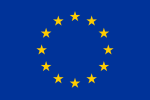After Russia’s full-scale invasion of Ukraine, most displaced persons seeking protection in Europe initially expected to stay only temporarily. As the war persisted however, many reconsidered their plans and adapted to prolonged displacement.
Summary
Background
As a consequence of the Russian military invasion in February 2022, an estimated 8.3 million people fled Ukraine. Thereby, primarily women and children sought refuge in selected EU member states. Over 5 million refugees registered for temporary protection or similar national protection schemes by May 2023, according to UNHCR. This status allows immediate access to basic integration-related benefits, a temporary residence, access to the labour market, and mobility rights.
While national administrations are required to facilitate access to these rights quickly, the arrival of often well-educated and highly skilled Ukrainians could also assist in the ongoing EU-wide labour shortage. Reported obstacles to meaningful job matching include issues of transferability and recognition of certificates, a lack of language skills, and uncertainty about the length of stay of the displaced person. This temporality poses a unique challenge for the development of integration measures.
Additionally, the fact that most people who fled Ukraine are women accompanied by children calls for gender-specific integration measures. Those measures have to consider the impact of care responsibilities and (in comparison to their male counterparts) smaller social networks, due to which institutional support on arrival becomes highly significant.
Research objectives
The INTAKE project examines innovative and promising examples of integration measures from Austria, Germany, and Poland that address these challenges and incorporate a gender-sensitive approach.
The study will apply the following methods:
- Literature review;
- Qualitative interviews with stakeholders from projects supporting displaced women from Ukraine, public labour market agencies, public administration, civil society and academia;
- Qualitative interviews with women fleeing from Ukraine;
- Social media analysis.


